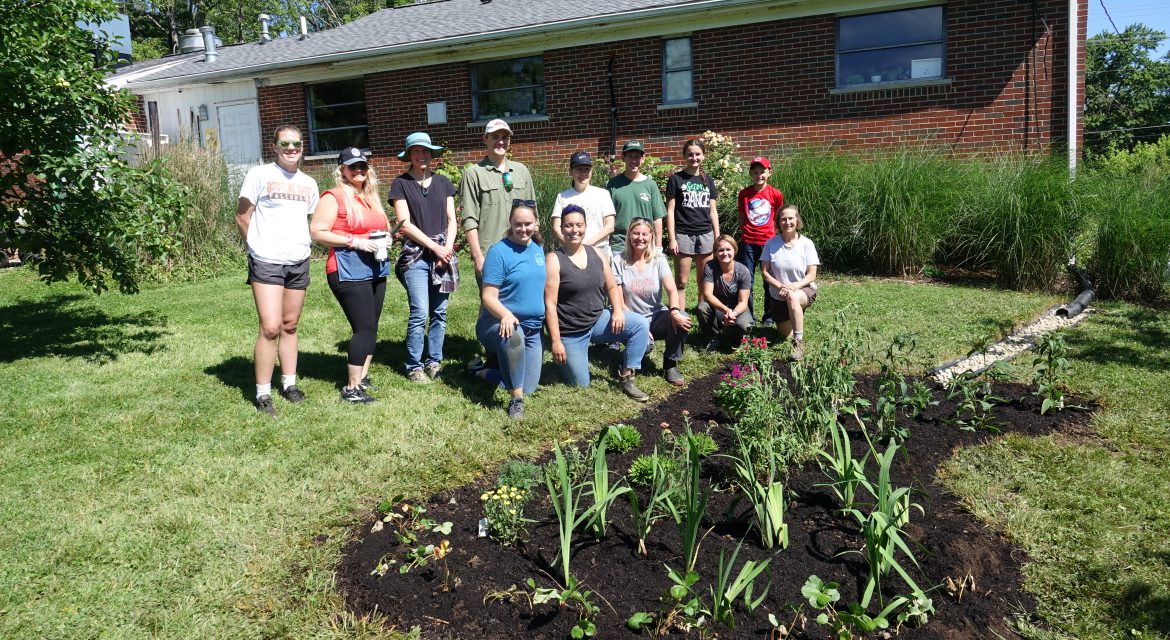
Home owners, business owners, and commercial property managers interested in storm water management practices can check out a rain garden at Bite Restaurant, 1279 State Route 131, Milford. Volunteers built the demonstration project on a beautiful Friday morning in June.
Rain gardens use native plants to manage storm water runoff, said Kat Zelak, Education Coordinator, Clermont Soil & Water Conservation District. They help water soak into soil faster, important because of the high clay content here.
“Having storm water more quickly infiltrate the soil through the garden instead of running into streams and rivers allows pollutants to be removed in a natural way,” Zelak said.
Like the garden at Bite Restaurant, most sit at the end of downspouts. Others are located at the end or driveways, in low spots in yards or where the biggest need exists.
Soil & Water reached out to Bite, which celebrated its 10th anniversary in April, about the demonstration project. The restaurant “believes that eating local is part of a bigger picture, the slow food movement,” according to its website. “A movement that believes the future of food is the future of the planet. That food should nourish a healthy lifestyle, and be fresh, seasonal and local. And it provides us with a smaller carbon footprint in the process. We believe in using nontoxic cleaners in the restaurant. Our organic grounds now include a beehive, composting, recycling, and re-purposing bins.”
“They came to me, and I thought it was a great idea,” said Rachel Seeberger, who owns the restaurant with her husband Marc. Bite grows organic vegetables, herbs, fruits, and nuts on its two-acre property. Seeberger noted that she teaches classes on gardening and sustainability to garden clubs and schools. She welcomes having a visual to show how a rain garden works.
Zelak said the rain garden includes strawberries, blue flag iris, yarrow, ashy sunflower, New England aster, bee balm and purple cone flower.
Volunteers from Soil & Water, the Clermont County Office of Environmental Quality and Natural Resources Conservation Service helped plant the garden.
A Greater Cincinnati Rain Gardeners program has started in Clermont, Hamilton, Warren and Butler counties in Ohio as well as Northern Kentucky. The six-week class teaches people how to build their own rain gardens. The next session starts in August. Classes run 9 a.m.-1 p.m. Fridays. See cincyraingardener.org for details.
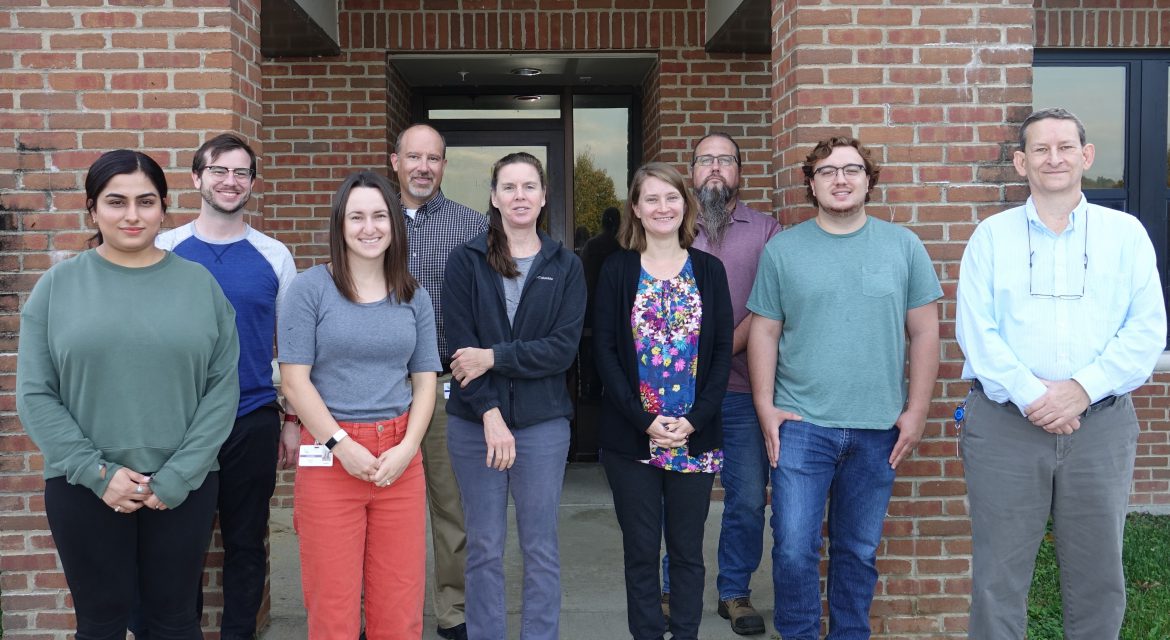
BATAVIA, OH — In a non-descript building tucked off a bend in State Route 50, near Interstate 275, small teams from Clermont County’s Office of Environmental Quality (OEQ) and the U.S. Environmental Protection Agency (USEPA) diligently work to keep our water safe.
A lab manager, chemist and three lab techs, who are key members of the OEQ team, work to test wastewater from four Clermont County treatment plants as well as 10 facilities in the City of Milford, New Richmond and other areas. They ensure that water meets safety standards before its release back into the environment.
Meanwhile, a research scientist from the USEPA and his team perform tests at the only Experimental Stream Facility of its type in the country. The facility replicates the natural world in a controlled environment, allowing the USEPA to study simulated streams in Clermont County and other locations. They test the effects of various chemicals on fish and macroinvertebrates and the results inform the development of water quality standards.
“The USEPA helps us with our local watershed program, and they also have a lot of other research projects underway,” said Hannah Lubbers, OEQ director. “The technical expertise they provide the county is of tremendous value to the region. This partnership, combined with other federal, state and local agencies is unique and helps us to address the challenges that led to formation of the Office of Environmental Quality 25 years ago.”
The OEQ story began in 1996, a year when Clermont County was experiencing rapid growth. In response, the county developed a wastewater master plan to ensure that growth and development occurred in a sustainable manner. The Board of County Commissioners recognized the importance of resource protection and charged OEQ to become the local experts on water quality.
“One of the main reasons for forming the Office of Environmental Quality was to protect the quality of water in Clermont County,” Lubbers said. She credits then-Director Paul Braasch with leading efforts to maintain local control over water resources.
The office is a joint department under Clermont County Water Resources, also doing work in Adams County as part of the Adams-Clermont Solid Waste District. It provides waste and recycling guidance to the public, does recycling programs in offices and schools, gives educational programs, and operates a waste transfer facility in Adams County. OEQ is also responsible for monitoring the CECOS landfill for regulatory compliance and water quality, as well as operating the Wastewater Laboratory on SR 50 in Milford. Additional responsibilities include partnering with the local Emergency Management Agency to respond to floods and tornadoes.
 Several years after establishing the OEQ and a Wastewater Master Plan, Clermont County received ownership of the Experimental Stream Research facility (ESF) from Procter & Gamble. OEQ secured a partnership with a renowned research scientist at the USEPA, Chris Nietch, to lease the facility for watershed research. The research that has since been done in Clermont County and neighboring counties fostered a unique partnership among federal, state and local governments.
Several years after establishing the OEQ and a Wastewater Master Plan, Clermont County received ownership of the Experimental Stream Research facility (ESF) from Procter & Gamble. OEQ secured a partnership with a renowned research scientist at the USEPA, Chris Nietch, to lease the facility for watershed research. The research that has since been done in Clermont County and neighboring counties fostered a unique partnership among federal, state and local governments.
In 2008, this group of agencies with a common interest in water resource protection formed the East Fork Watershed Cooperative (EFWCoop). The EFWCoop, which includes OEQ, USEPA, Clermont Soil & Water Conservation District, Clermont County Water Resources, the Natural Resources Conservation Service (an agency of the U.S. Department of Agriculture), United States Army Corp, Ohio Department of Natural Resources, Clermont County Park District and local stakeholders, began meeting regularly and combined resources to enhance local and regional efforts. As a result, the East Fork of the Little Miami has become a test bed for watershed research and management practices.
As the EFWCoop built a comprehensive water monitoring system, OEQ set about creating an in-house water quality program to identify priority management areas and assess long-term trends. The program has achieved Level 3 certification, the highest given by the Ohio Environmental Protection Agency. Over the years, OEQ has sampled many sites in the East Fork watershed. This helps identify areas of high pollution that can be targeted for practices to reduce contamination. This information, along with results from a watershed model developed by USEPA, is used to prioritize areas for management practices when funding becomes available.
“A major threat to water quality in this area is nutrient loading, which is basically too much nitrogen and phosphorus in streams coming from multiple sources,” Lubbers said. “This type of pollution, called non-point source pollution, is what Clermont County is focused on managing.”
Non-point source pollution (NPS) is runoff from rainfall or snow melt that washes pollutants off the landscape and into nearby streams. Nutrients from fertilizers and failing septic systems are the main source of pollution in this region and are the main cause of Harmful Algal Blooms in East Fork Lake. Land use above the lake is primarily agricultural.
“Agricultural best management practices, or BMPs, such as cover crops and no-till, are the best avenue to reduce nutrient runoff in the watershed,” Lubbers said. With the help of the EFWCoop, cover crop acreage has increased dramatically in the region and landowner interest in other BMPs is growing.
In addition to agricultural practices, many other watershed projects have provided water quality benefits. Clermont County OEQ has been instrumental in helping partner agencies secure more than $9 million in grant funding to remove low-head dams, restore stream habitat and implement storm water improvement practices. A recent study revealed the East Fork Little Miami River is meeting water quality standards downstream of East Fork Lake, where most of the waste water treatment plants are located. Prior to gaining a better understanding of NPS runoff, treatment plants were thought to be the main sources of pollution.
“We think many of the watershed management projects and practices implemented in the lower East Fork of the Little Miami River have contributed to that section of river being in attainment of state water quality standards,” Lubbers said. Because the river is in good condition, the treatment plants won’t be burdened with stricter nutrient limits.
The East Fork Little Miami River watershed is now regarded as one of the most comprehensive and effective watershed management programs throughout Ohio. The strength of the local partnerships has directed attention and grant dollars from northern Ohio and Lake Erie, to southern Ohio and the vitally important watersheds of the Ohio River.
“While the county and region continue to grow and develop, Clermont OEQ and its many partners will carry on our work to help ensure the rural nature of the region is preserved so our growing populations can continue to enjoy Clermont County’s abundant natural resources,” Lubbers said.
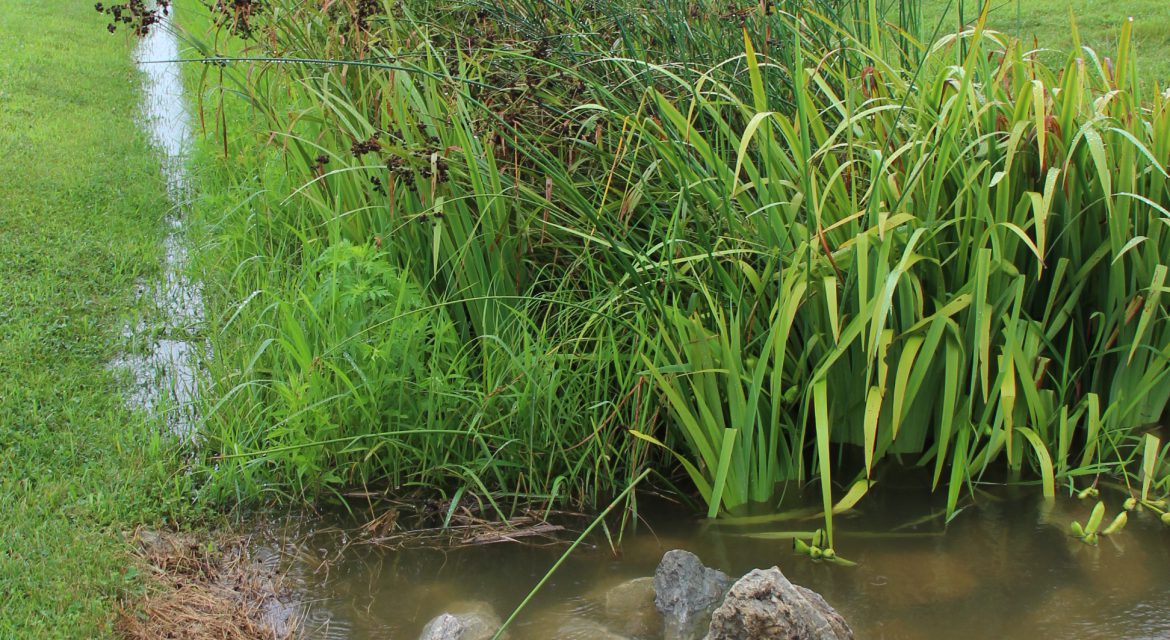
BATAVIA, Ohio (May 31, 2019) — The Clermont County Soil & Water District (SWCD), the Clermont Office of Environmental Quality (OEQ), and the U.S. EPA Office of Research and Development were awarded the top government stormwater project of the year at the 2019 Ohio Stormwater Conference held in Sharonville on May 8-10.
The project, funded by a USDA Conservation Innovation Grant, involved the installation of an urban stormwater detention basin on a farm in Jackson Township in Clermont County in 2015. Its purpose was to remove nutrients from soil runoff. The nutrients are one of the causes of harmful algae blooms in Harsha Lake.
Results have shown that 31% of total nitrogen and 31% of total phosphorus have been removed from the runoff.
“The need to address nutrient runoff is important because it degrades water quality and contributes to algae blooms that are occurring around the world,” said Jake Hahn, technician with SWCD. “The soils that we have in our county are very unique to Ohio and an ‘outside the box’ approach was needed because current management practices do not always apply in our area.”
The partnership that made this project successful, coined the East Fork Water Quality Cooperative, includes many county, state and federal agencies, landowners, and the private industry.
“This project speaks to the great success of everyone working together for a viable solution,” said Hannah Lubbers, Director of OEQ.
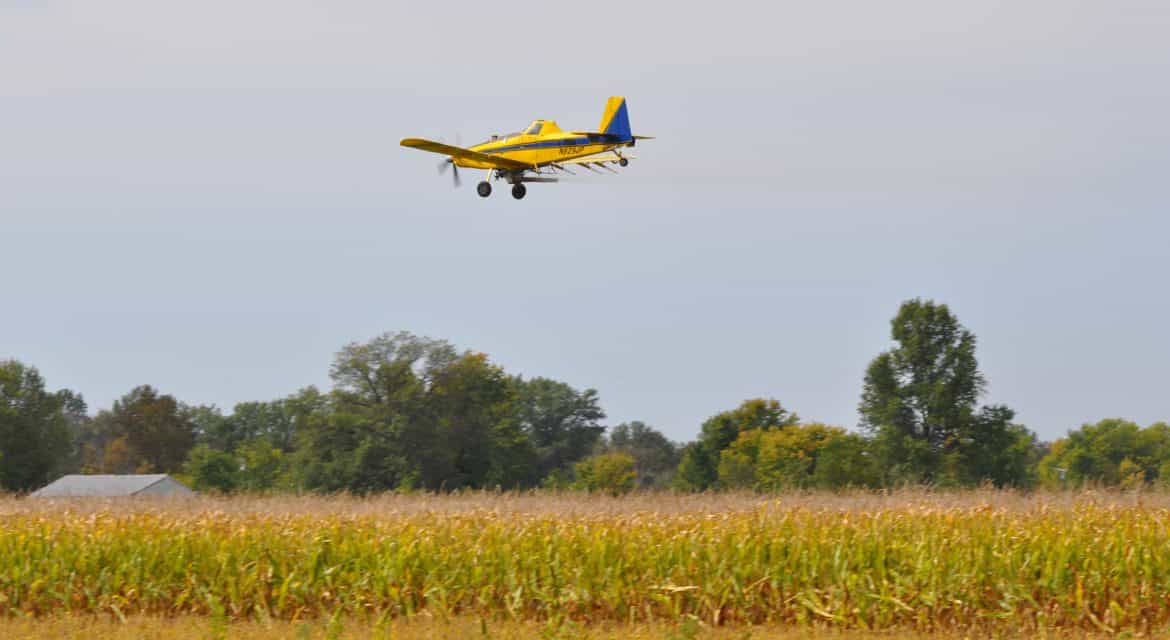
BATAVIA, Ohio (April 19, 2019) — The USDA Natural Resources Conservation Service (NRCS) is now accepting Conservation Stewardship Program (CSP) applications to be considered for funding in fiscal year 2019. Applications must be submitted by May 10.
Lori Lenhart, NRSC district conservationist for Brown and Clermont Counties, said, “This program is a great way for agricultural producers to take conservation activities on their farm to the next level. While this program has not been as popular as other NRCS programs in the past, the 2018 Farm Bill made several changes to CSP which should increase interest.”
The 2018 Farm Bill authorizes NRCS to accept new CSP enrollments from now until 2023, and made some important improvements to the program. These updates include:
CSP is offered in Ohio through continuous sign-ups. The program provides many benefits including increased crop yields, wildlife habitat improvements, and increased resilience to weather extremes. Eligible land uses for CSP enrollment include cropland, pastureland and forested land.
While applications are accepted throughout the year, interested producers should submit applications to their local NRCS office by May 10 to ensure consideration for 2019 funding. For more information, contact Lenhart at lori.lenhart@oh.usda.gov, or (513) 732-2181 ext. 3.
#######
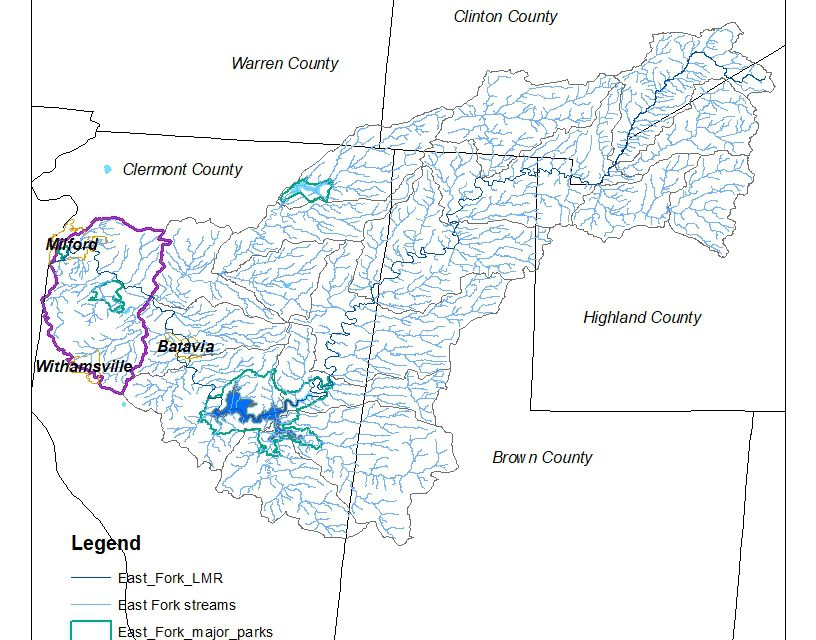
BATAVIA, Ohio (April 9, 2019) — The Clermont Soil & Water Conservation District (SWCD) is in the process of updating the watershed action plan for the Lower East Fork Little Miami River, and would like to hear from residents about the water quality needs for this area.
The Lower East Fork watershed encompasses the land area that drains to the East Fork from a point downstream of Stonelick Creek to where the East Fork joins the Little Miami River downstream of Milford. In December 2003, Clermont SWCD and members of the East Fork Watershed Collaborative completed a watershed action plan that summarized the existing conditions and laid out strategies for protecting or improving water quality. Several items listed in the 2003 plan have been accomplished, but new challenges and regulations have arisen since the plan was completed, necessitating an update.
Clermont SWCD will accept public comments through Friday, May 31. A copy of the current plan is posted on Clermont SWCD’s website at www.clermontswcd.org. Comments or questions can be addressed to Becky McClatchey, SWCD natural resource specialist, at rmcclatchey@clermontcountyohio.gov, or 513.732.7075 ext. 6. Written comments can also be sent to Clermont SWCD, P.O. Box 549, Owensville, OH 45160.
########
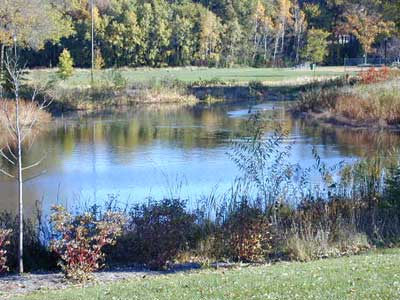
BATAVIA, Ohio (Feb. 26, 2019) — Clermont Soil and Water Conservation District (SWCD) will offer a free pond clinic to pond owners and managers at 5:30 p.m. on April 9 at the Cincinnati Nature Center-Rowe Woods at 4949 Tealtown Road, Milford.
This year the pond clinic will include additional speakers, a new breakout session format, and a pond walk from 4-5 p.m. before the event, weather permitting.
Eugene Braig, program director of Ohio State University Extension Aquatic Ecosystems Program, will deliver the opening presentation “The Aging Process: Keeping Ponds Healthy for the Long Run.” Breakout sessions will include Ponds 101 with Jake Hahn of the SWCD; fish stocking with Jones Fish Hatchery; pond weed control also with Jones Fish Hatchery, and the benefits of riparian buffers for wildlife attraction and pond protection with Olivia Espinoza of the Nature Center.
“Our event is one of the largest in the area and we want to continue to grow this program to best inform our pond managers,” Hahn said. More than 5,000 ponds are in Clermont County, and being used for different purposes. “We hope our event can be a place for pond owners to interact with other owners in the area to solve management problems with the guidance of our expert speakers,” Hahn said.
“Through this clinic, citizens will learn how recreational and storm water ponds can be maintained, and the steps to planning their own new ponds,” he said. “Since ponds are not a common natural landscape feature in our area, they need additional maintenance and care to function properly and meet the landowners’ expectations.” Clermont SWCD’s goal is to help construct and maintain a safe, functional, and attractive pond. Clermont County Farm Bureau is sponsoring the event.
There is no cost, but registration is required to gain free admission to the Cincinnati Nature Center. To register or for more information, go to www.clermontswcd.org or contact Clermont SWCD at 513.732.7075. ####
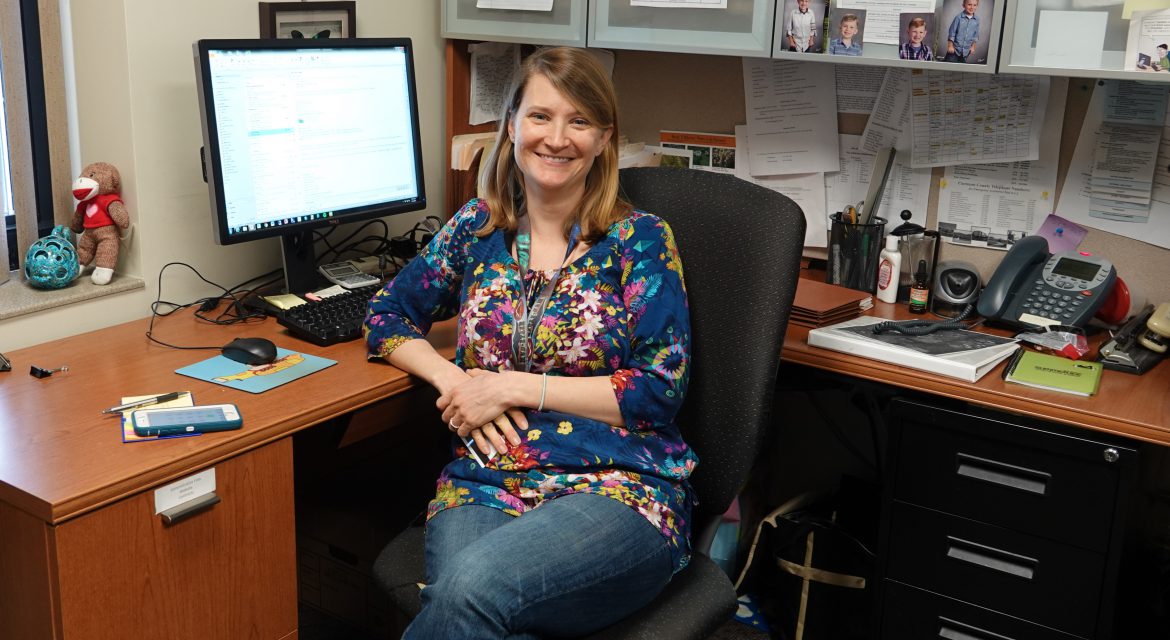
BATAVIA, Ohio (Feb. 26, 2019) – Hannah Lubbers, the new director of the Clermont County Office of Environmental Quality (OEQ) and the Adams-Clermont Solid Waste District, came by her love of the outdoors naturally.
Growing up in the City of Hamilton, she and her family enjoyed hiking and canoeing, at Hueston Woods and the Whitewater River in Indiana.
Lubbers was hired by Paul Braasch, the recently retired director of both offices, almost 11 years ago, as a program manager for the OEQ. She had just completed her Masters in biology at the University of Cincinnati. Her undergrad degree at UC was in environmental studies.
“I started as a chemistry major in college,” she said. “I took a class in environmental policy and I got interested in environmental studies – where policy and science intersect.”
That was perfect for her new job, where she specialized in understanding the watershed of the East Fork of the Little Miami River, and studying best management practices (BMPs) that would help farmers to decrease nutrient runoff.
The Office of Environmental Quality is one of the members of the East Fork Watershed Cooperative, an organization comprised of federal, state and county stakeholders that has conducted extensive research on the watershed to improve water quality.
When she began her work, Lubbers said, “We were more focused on wastewater effluent in streams. But local water quality data showed that runoff from agriculture also significantly impacted water quality.”
Partners in the East Fork Watershed Cooperative, including the USDA’s National Resources Conservation Service (NRCS), and the Clermont County Soil & Water Conservation District, have been crucial to enlisting county farmers to use methods, such as planting cover crops and installing biological treatment systems, that lessen nutrient runoff.
And the unique nature of the cooperative has allowed it to pull in state and federal funding, Lubbers said. More than $3 million in grants to Clermont and Brown counties is funding cover crops and other BMPs, enough for 12,000 acres. In 2018, the NRCS allocated an additional $600,000 to the area to fund various agriculture projects, all in the service of improving the quality of water in the watershed.
Lubbers wears another hat as director of the Adams-Clermont Solid Waste District. “My primary goal is to ensure the sustainability of recycling,” she said. In 2018, the Solid Waste District helped Batavia, Ohio and Williamsburg townships secure curbside recycling via waste franchising to over 8,000 households.
“I want to make sure that all county residents maintain access to recycling,” she said. Currently, residents of Union Township, the largest township in Clermont County, have limited curbside recycling opportunities. There are also no drop-off sites in Union Township; several drop-off sites throughout the county have been closed because of illegal dumping.
“One of our goals is to make sure that recycling is available at apartment complexes,” Lubber said. Once more townships adopt curbside recycling, and more apartments have recycling bins, there won’t be as great a need for the drop-off sites, she said.
Lubbers, who lives in Clermont County, loves its natural beauty. She loves and appreciates the rural nature of much of the county. And she wants to make sure that is preserved while the county continues to grow in jobs and population.
Litter – which mars so many of the roadways in the county — is one thing that gets to her. In 2018, an astounding 88 tons of litter was removed from rivers and streams in the county, much of it during the annual Spring Litter Clean-Up.
“There’s that phrase, ‘Think globally, act locally,’” Lubbers says “NOT littering, and picking up litter when you see it, is one way of acting locally. It doesn’t have to be your garbage – pick it up!”
#######
BATAVIA, Ohio (Feb. 19, 2019) — Dorothy Pelanda, the new director of the Ohio Department of Agriculture (ODA), is hosting a series of informal meet-and-greet events across Ohio. The meetings will present the opportunity for Director Pelanda to introduce herself, share information regarding her background, and listen to thoughts and ideas from members of Ohio’s food and agriculture industry.
Pelanda, who lives on the same family farm in Marysville that she grew up on, served in the Ohio House of Representatives from 2011 until her appointment as ODA director.
The events will be hosted in conjunction with local Soil and Water Conservation Districts. The events are open to the public and members of the media are welcome to attend. Pelanda’s meet-and-greet for Brown, Clermont, Adams and Highland counties will be held on Monday, April 8, beginning at 10 a.m. at the Brown County Fairgrounds, 325 W. State Street, Georgetown OH 45121.
For information, call the ODA Office of Communications at 614.752.9817, or the Brown County Soil and Water Conservation District at 937.378.4424.
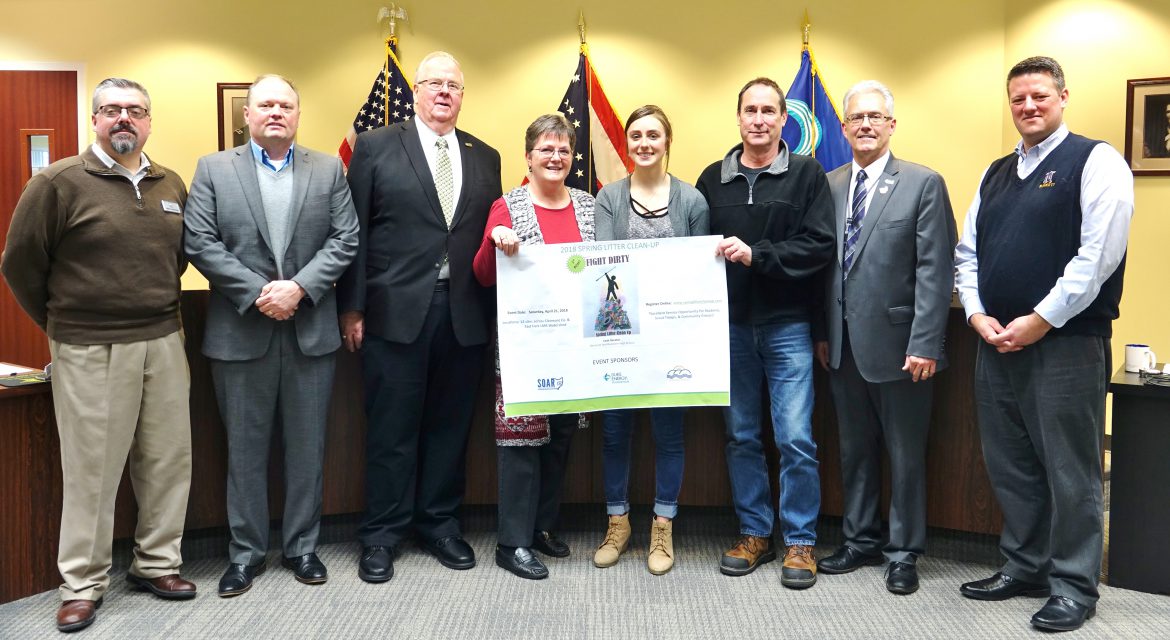
OWENSVILLE, Ohio (Jan. 7, 2019) – All local K-12 students are invited once again to participate in the annual Spring Litter Clean-Up T-Shirt Design Contest. Sponsored locally by the Duke Energy Foundation, the Clermont County Convention & Visitors Bureau and the Southern Ohio Association of Realtors (SOAR), the T-shirt contest helps to jump-start planning for the clean-up event, scheduled for Saturday, April 13.
Any K-12 student attending a school located in Clermont County, or within the East Fork watershed, may register to compete. T-shirt designs should emphasize litter clean-up and prevention. Students should register and review the rules on the event website: www.springlittercleanup.com.
The grand prize winner will be awarded $100, with an additional $100 going to the winning student’s school art department. There will also be 13 grade-level awards given at $25 each.
Designs must be submitted by Feb. 8.
The Spring Litter Clean-Up will be held from 9 a.m.-noon on April 13 in various communities across the county and watershed. The clean-up is a combination of two events that have proved successful for more than 20 years in Clermont County – the East Fork River Sweep and Clermont Clean & Green events. The event is coordinated each year by the Clermont Soil & Water Conservation District and the Valley View Foundation.
(Photo: Last year’s winner, Leah Decatur, center.)
######